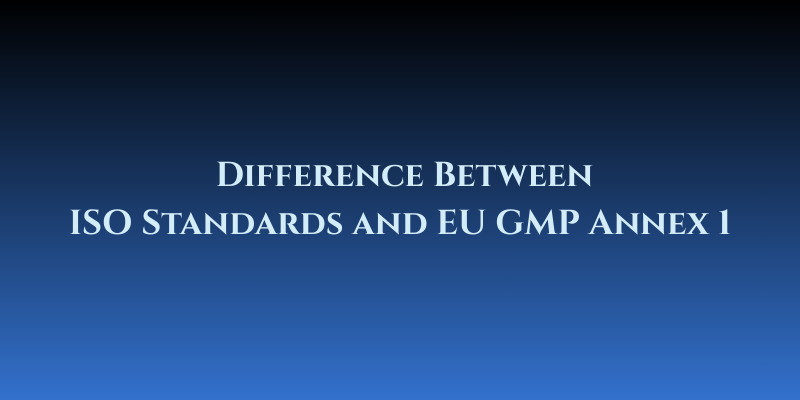Difference Between ISO Standards and EU GMP Annex 1
The difference between ISO standards and EU GMP Annex 1 regarding airflow velocity measurement points is a common source of confusion in qualifying HEPA filter velocity is measured in both cleanrooms and laminar airflow (LAF) especially in Grade A areas.
Air velocity is crucial to maintain cleanliness and prevent contamination at clean room but for Grade A zones working 0.36 to 0.54 m/s (or 0.45 m/s +/- 20%), helps to create a unidirectional airflow that sweeps away particles and prevents them from settling on critical surfaces. Hence the requirement are completely different.
Here’s a breakdown of the expectations and how regulatory authorities typically interpret them:
ISO 14644-3 (Testing and Monitoring)
Air velocity measurement point: ISO 14644-3 suggests measuring 150 to 300 mm below the filter face, essentially to ensure the HEPA/ULPA filters are delivering the expected airflow directly.
Purpose: This is part of the qualification of the filter performance—you’re confirming that the air exits the filter at the right velocity and uniformity.
EU GMP Annex 1 (2022 Revision)
Airflow velocity focus: Annex 1 emphasizes airflow at the working height—the location where sterile operations or critical tasks are performed.
Purpose: The concern here is protection of the critical zone. It’s not just about what comes out of the filter, but whether adequate unidirectional airflow (UDF) and air change rates protect the product at the point of use.
“Unidirectional airflow systems should provide a homogeneous air speed in a range of 0.36 – 0.54 m/s (guidance value) at the working position, unless otherwise scientifically justified in the CCS. ” – EU Annex 1
What do regulators expect?
EU/EMA (Europe): Annex 1 compliance is mandatory.
Expect proof of unidirectional airflow at working height (typically ~0.36–0.54 m/s).
Also expect testing at filter face level during initial qualification (per ISO 14644-3), but ongoing monitoring focuses on performance at the critical zone.
FDA (US): Follows ISO 14644 guidance but leans heavily on actual risk to product.
Will accept either, but expects justification—if you only measure at filter face, you must show airflow reaches and protects working zone.
“Velocities of unidirectional air should be measured 6 inches from the filter face and at a defined distance proximal to the work surface for HEPA filters in the critical area.” – FDA 2004 Guidance
WHO/Other PIC/S countries: Generally aligned with Annex 1.
Expect velocity measurements at the working height as part of routine monitoring and risk-based qualification.
“Unidirectional airflow systems should provide a homogeneous air speed of 0.36–0.54 m/s (guidance value) at a defined test position 15–30 cm below the terminal filter or air distributor system. The velocity at working level should not be less than 0.36 m/s. ” – WHO 961, Annex 6
Read also:
Resource Person: Palash Chandra Das







